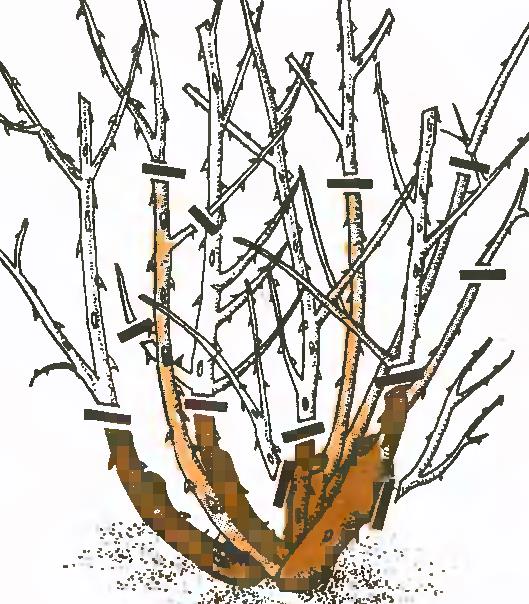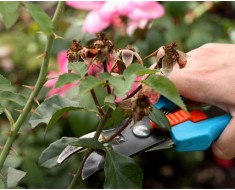Bacteria on the Earth are everywhere and in huge quantities. There are beneficial bacteria, and there are pathogenic ones. Useful ones help digest food, fix nitrogen in legumes, help decompose the remains of plants and animals, are used in sewage systems, etc. Pathogenic bacteria cause severe and often fatal diseases in plants, animals and people.
Two words from the history of bacteria.
The first bacterial disease was anthrax caused by Bacillus anthracis. She provoked a plague of cattle and sheep in 1876. In 1877-1885, the Erwinia amylovora Burrill bacterium hit apples and pears. This bacterial disease is called a “bacterial burn”. There are bacteria that are difficult or impossible to cultivate in the laboratory. They grow in the tissues of xylem or phloem of the plant and interfere with the transfer of water and nutrients in the plant. Insects spread them. These bacteria were precisely identified in 1967, and before that they were classified as viruses.
Description of bacteria
Bacteria are microscopic, unicellular prokaryotic organisms that multiply by dividing by two (one cell is divided into two). They are divided into two main groups based on the structure of the cell wall. They are determined using Gram staining. Gram-negative bacteria are colored red or pink, and gram-positive bacteria are purple. Such a reaction is directly related to the chemical composition and structure of their cell walls. Bacteria are rod-shaped, spherical, spiral or filiform. Most bacteria are motile and have flagellate “ponytails” that move them in fluids.
Plants affect phytoplasm and spiroplasm. They do not have rigid cell walls. In phytoplasmas, the shape is round or ovoid. Many diseases caused by phytoplasmic bacteria are named after plants in which the disease first appeared. There are diseases peculiar only to specific plants, and there are those that harm very different plants. For example, the yellow aster’s phytoplasm harms phloxes and gladioli, tomatoes, onions, spinach, salads, carrots, strawberries and many weeds (that’s what a mess!)).
How bacteria act on plants
In the classification of bacteria that infect plants, changes occur from time to time due to the progress of methods and methods for studying pathogens. Improvements in technology that helps scientists in these processes are also significantly affected. Most plant pathogenic bacteria are of the following genera: Erwinia, Pectobacterium, Pantoea, Agrobacterium, Pseudomonas, Ralstonia, Burkholderia, Acidovorax, Xanthomonas, Clavibacter, Streptomyces, Xylella, Spiroplasma and Phytoplasma.
Pathogenic bacteria cause a lot of symptoms in plants: galls, excessive growth, wilting, stains on leaves, rot, growths, ulcers. Unlike viruses that penetrate into plant cells, bacteria grow between cells. The ways in which they cause disease are also diverse. Some emit toxins, special proteins, enzymes, create colonies, and very sophisticated ones are engaged in genetic modification and transformation.
Bacteria spread among plants in different ways: rain, wind, birds, insects, animals and people help unwittingly expand the range of action of bacteria (the aforementioned bacterial burn is from North America). But the main way is to spread the infected plant material. Bacteria penetrate plants through wounds, natural openings (stomata, for example). Further, the pathogen destroys the cells of the host plant in order to comfortably grow, winter, survive adverse conditions, or wait on a plant susceptible to it, to remain inactive in infected tissue, soil, water, and insects.
Control over plant
bacteria Control bacterial diseases is difficult. The focus should be on preventing the spread of bacterial pathogens, and not on treating their effects in the garden, kitchen garden, park, etc. The complex control measures are as follows:
- use of genetically resistant plants
- processed planting material
- processing of the working tool
- crop rotation to reduce wintering bacteria
- preventing wounds allowing bacteria to enter plants,
- buying healthy seedlings,
- exposure to dry air, heat and sunlight for a long time can kill bacteria
- using copper-containing compounds or Bordeaux mixture (copper sulfate and lime)
- preplant treatment with antibiotics (streptomycin or oxytetracycline), which can help kill or suppress pathogenic bacteria before infection and reduce the spread of diseases, but not cure
- antibiotics help cure phytoplasmic diseases, suppress them (e.g. tetracycline)
- early treatment of plants
- insect control will help reduce the number of peddlers and wounds that they provide for bacteria
- using antagonistic or biological control products to fight bacterial diseases;
- strict quarantine that excludes or restricts the introduction or movement of fungal and fungal-like pathogens, infected plant material.
Safe for you to grow!








